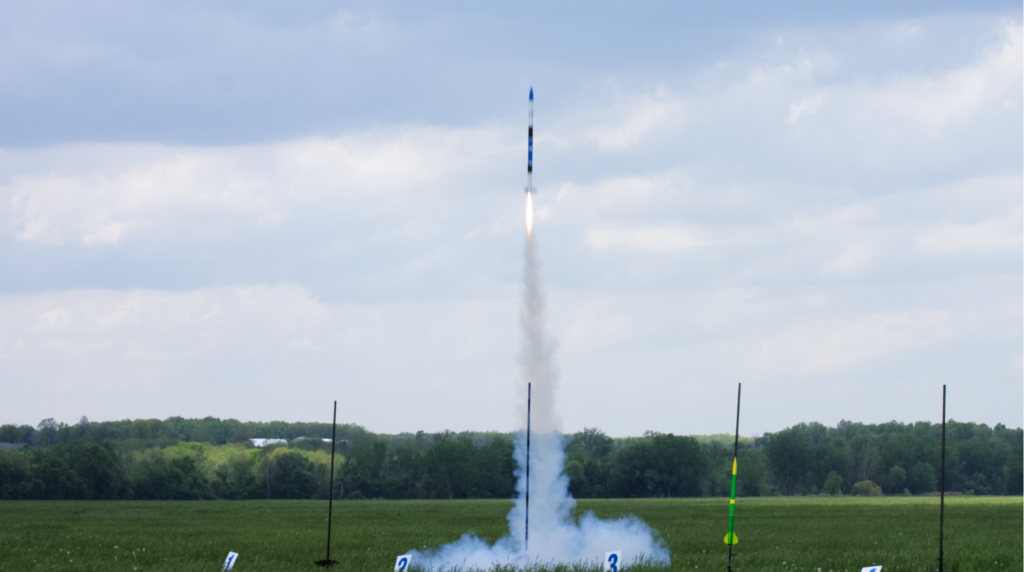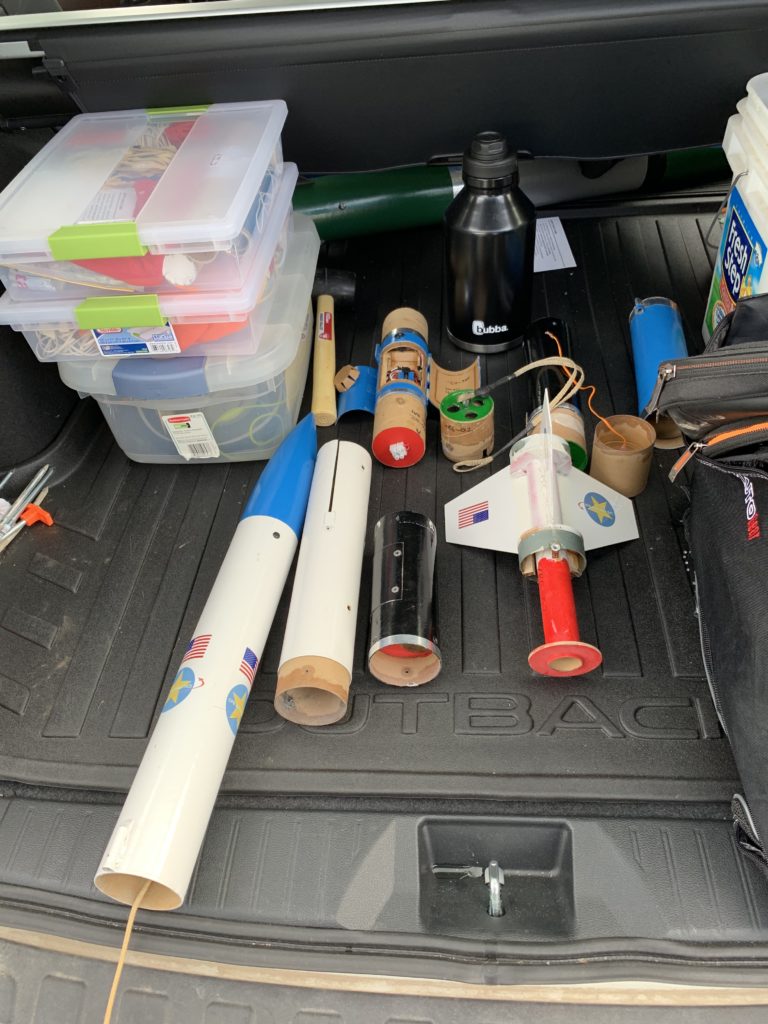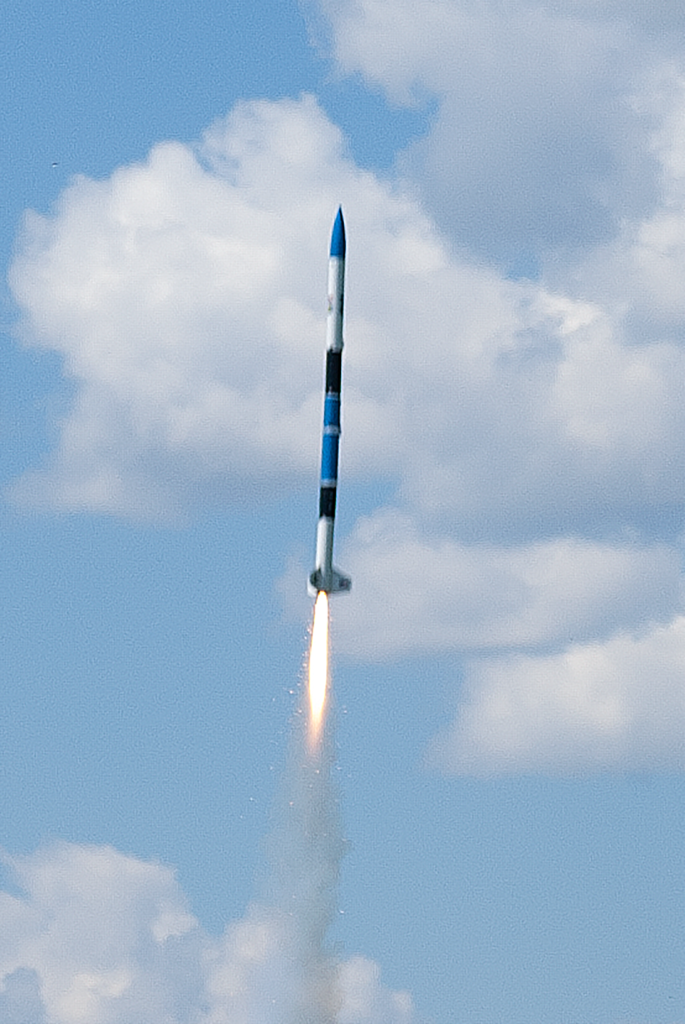PLS-5016 & 5017: Ares’ Maiden voyages
(May 25 – 27, 2019, Geneseo, NY)
The newest member of the Perseus rocket family, Ares finally took to the sky with two impressive flights, and an adventure / scare on it’s first mission!

After a couple of hours of pre-flight tests, I cleared Ares for mission PLS-5016, it’s first flight ever. It was an extra nervous occasion for me. This is because of some significant design changes I was trying out for the first time. These changes makes Ares quite different from her sister rocket, Nesaru, despite the very similar outward appearances. These structural changes resulted in quite a savings in weight, And on this day, these changes were about to put to the test for the first time.
Of these changes is the departure from the standard “Threaded rods and a sled” approach of mounting avionics (aviation electronics). The approach used in Ares is a nod to a technique I adapted from Endeavour (my experimental tube fin design). In this case, Ares has its electronics built behind access panel doors. There are two doors, each opposite the other. One provides access to the altimeter section, and the other to the on-board battery and (eventually) a telemetry transmitter system. This is a significant change from Endeavour’s system, which only has a single access panel, leaving the rest of the airframe for structural stability.
Ares has an “I Beam” type frame structure built around the access hatches to transfer all the stresses of flight & recovery AROUND the access panels. This framing (and mounting structures for the electronics) are all built from thick (but light) Basswood stock.
Just before liftoff, a storm started to blow in, but Ares flew beautifully. One hitch, however, is that the winds at the 1,000+ foot level were becoming quite strong. Ares flew gracefully to an altitude of 1604 feet on an CTI H135 motor. This is an altitude a little over 300 feet higher than Nesaru can reach on the same motor! The weight savings payed off. Structurally, everything held together beautifully, and functioned according to plan. There was no drogue parachute used, and Ares used tumble recovery for the first deployment event. Even thought the parachutes were deployed
The winds aloft were strong enough to carry Ares almost a mile downrange despite not having a parachute. The main parachute deployed at 600 feet, and Ares was well over a mile downrange in tall grass.
Recovery was not possible until the next day, after Ares sat out in straight line winds, and almost continuous downpour of rain for most of the night.
The rocket was recovered the next morning, in surprisingly good shape.

She was dis-assembled back at base camp, cleaned up, and inspected.
The night was spent in a cold hotel room as I set the room AC low to drop the humidity enough to dry out the water logged parts of the rocket faster.
By the morning, the rocket was dry again. Monday morning was spent inspecting Ares for signs of further damage.
There was some minor damage that could not be repaired in the field, but by thinking like MacGuyver for a little bit, I “MacGuyver-ed” a solution, and gave a go at a second flight.
Ares lifted off that morning to beautifully clear sky. The flight was arrow straight, reaching an altitude of 1672 feet. Ares gently descended on it’s parachute not far from the launch pad on its return. This flight was a crowd pleasing launch as most were aware that she sat out in a field in storms just a couple days earlier, and it was amazing to see her fly seemingly with no damage!
